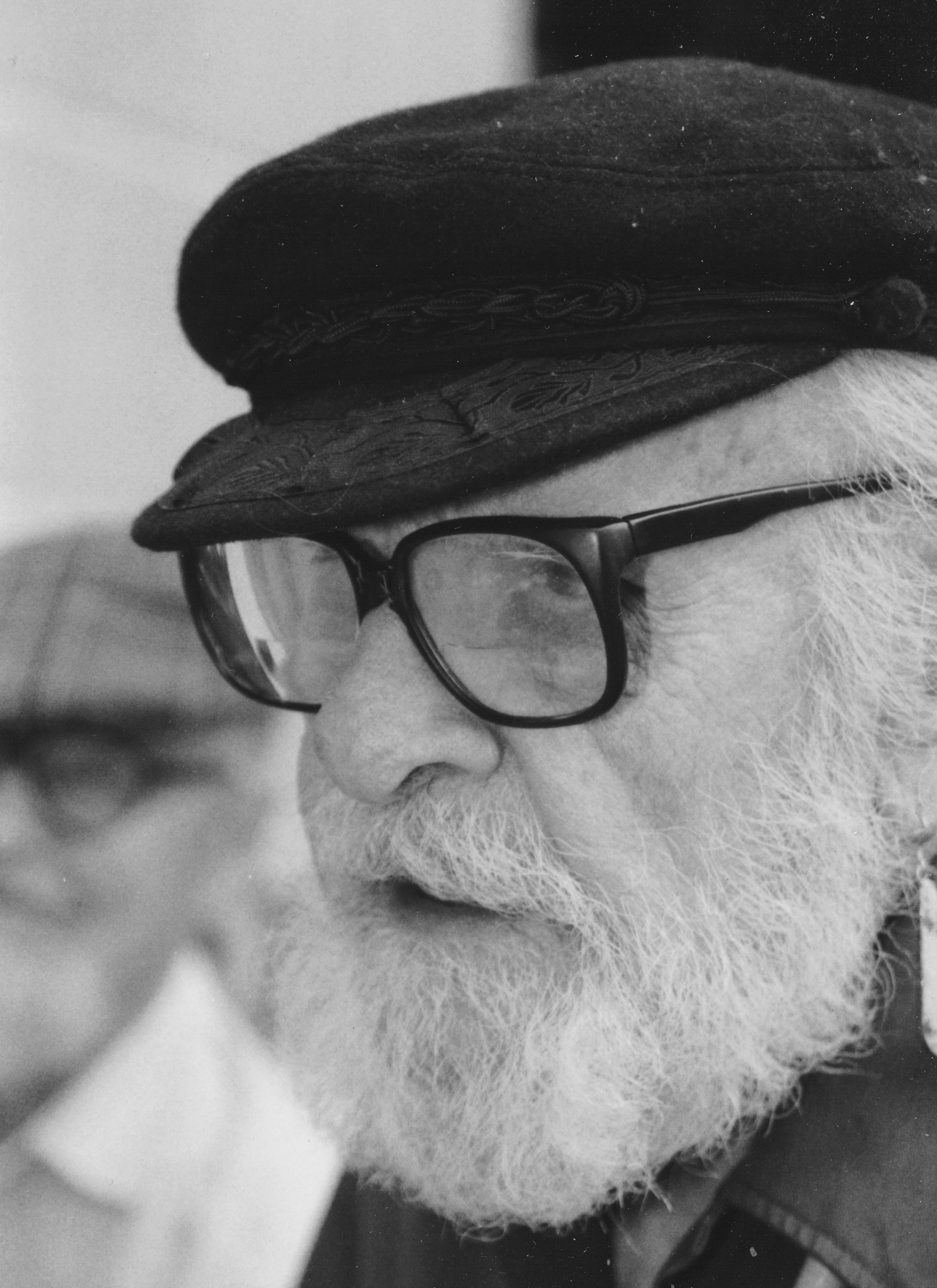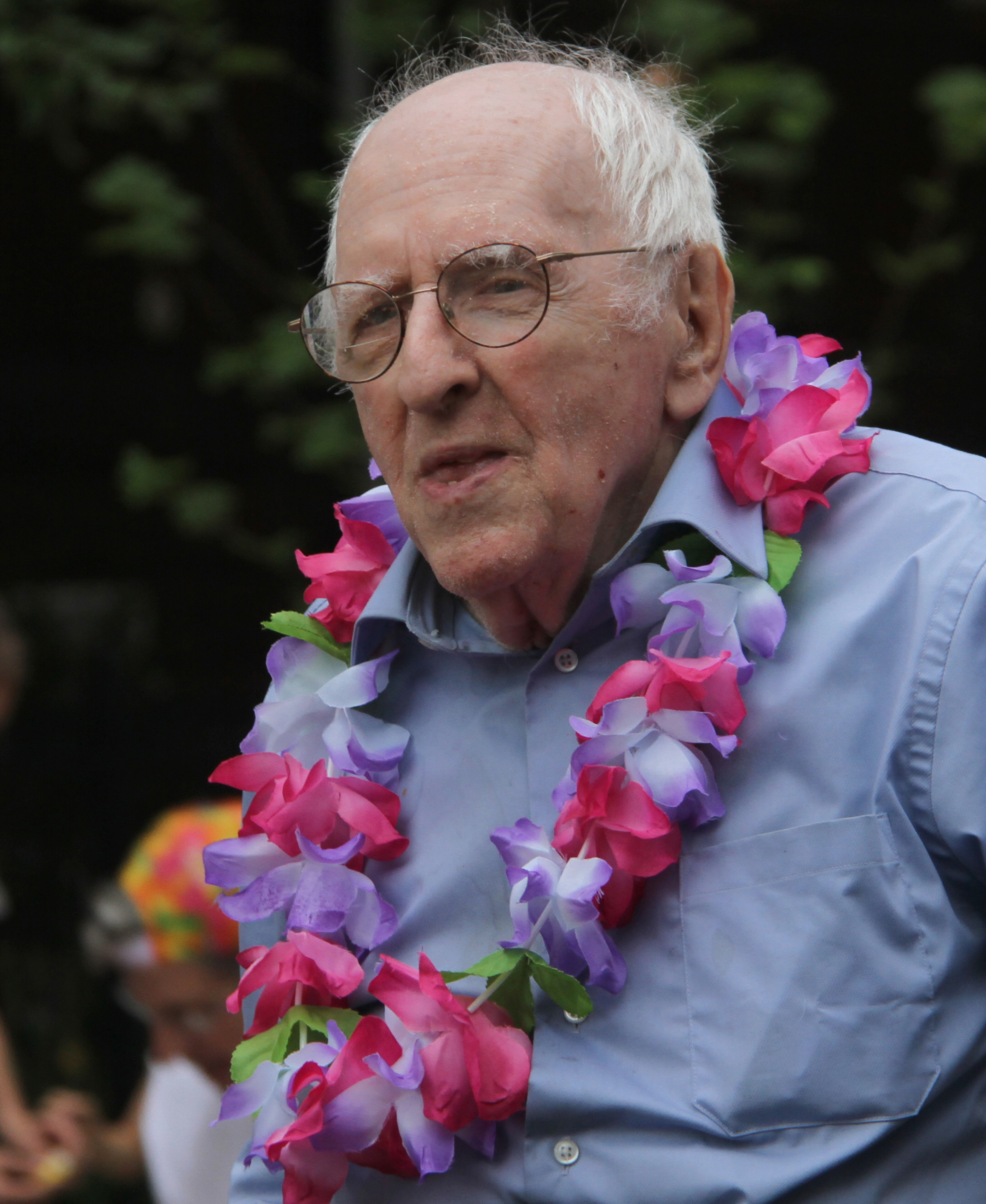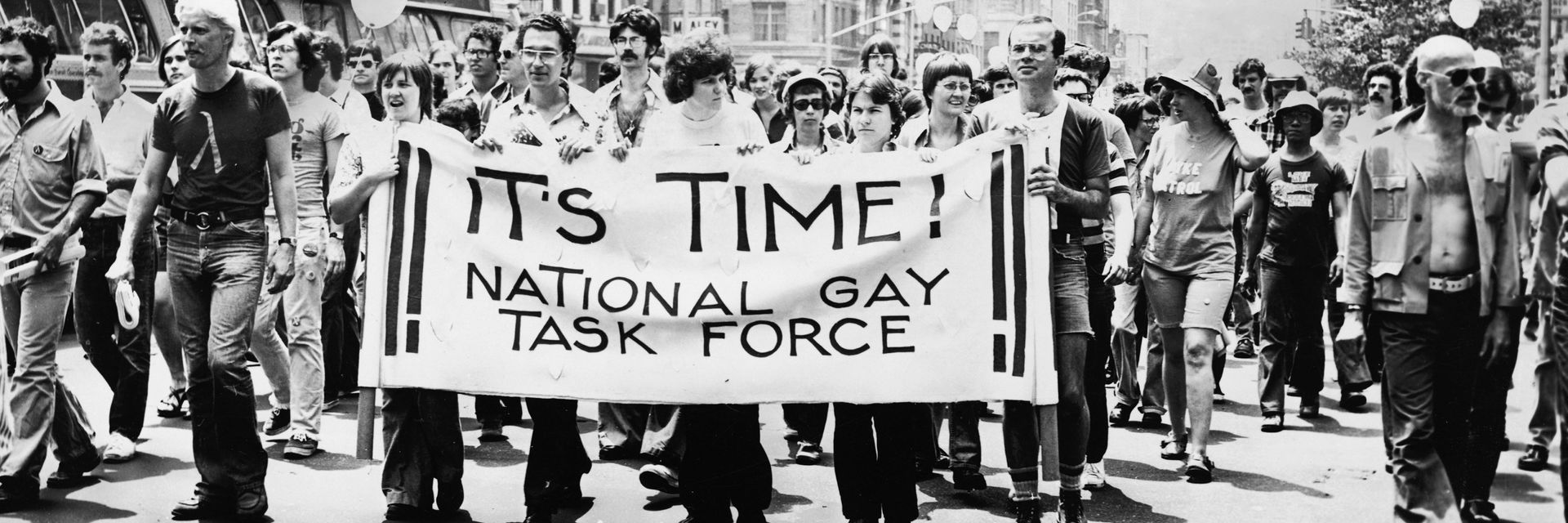(Editor’s Note: This article was originally published in September 2018. It has been substantially updated to include new information, primarily concerning LGBTQ pioneer Randy Wicker.)
◊
The 21st century has been marked by rapid progress for members of the LGBTQ community, both in the U.S. and internationally. But, in fact, recent advances in gay rights stand on a foundation that was laid by courageous activists and the organizations they created more than 50 years ago. These are stories that need to be told.
Believe it or not, there was LGBTQ history before Stonewall. You may think, as I do, that you know most of the facts of lesbian and gay – or LGBTQ – history, especially if you follow current events. Certainly, you are aware of issues such as transgender people serving in the military, gay marriage, and the enduring challenges of addressing and ending the scourge of AIDS.
And you probably know something about the Stonewall Rebellion of 1969 in New York City. But before that . . . what? Perhaps you’re drawing a blank, or you thought all gay men and lesbians in the U.S. back then lived closeted lives, fearful of coming out till gay liberation hit.
Honestly, even though I am an out and aware gay man, my understanding of pre-Stonewall history was quite spotty. But the fact is there was a national organization, called the Mattachine Society, that was politically active for years prior to 1969, when awareness of gay people as a social force first seemed to appear in the national consciousness.
The Modest Start of a Nationwide Gay Movement
At the dawn of the 1950s, a group of gay men came together to engage in some very daring (for the era) political efforts. This early home for activists was the Mattachine Society, which started in Los Angeles, then spread to other cities.
Using the term “gay men” might be getting a little ahead of the story, since “gay” had not yet emerged as a widely or overtly used identifier in that era. Rather, the word these men chose was homophile, a neologism derived from Greek roots and denoting “same (sex) lover.” It was a different time, and the term was intended to lend dignity to a community widely despised or suppressed – often violently – by the larger American society.
Harry Hay Takes a Stand
The Mattachine Society’s founder was Harry Hay, who has deservedly earned a prominent place in the history of gay rights. Hay was a colorful character who waged a lifelong campaign for inclusiveness and equality. In the 1950s, that was quite a radical stance.
Harry Hay is the subject of an excellent book called The Trouble with Harry Hay: Founder of the Modern Gay Movement, written by the late historian and author Stuart Timmons.
Moreover, Hay was a communist, the tenets of which helped him organize the first “cell” of adherents – and then, during the Red Scare of the mid to late 1950s, led to his downfall within the group.

Harry Hay organized the first “cell” of the nascent gay rights organization, the Mattachine Society, in Los Angeles in 1950. (Source: Slobodandimitrov, via Wikimedia Creative Commons)
Helping him at the Mattachine Society’s inception was his partner at the time, Austrian-born designer Rudi Gernreich, best (or most notoriously) known for his invention in the mid-1960s of the first woman’s topless bathing suit. (Hay and Gernreich must have been a fun couple!)
The Mattachine Society’s goals, as stated in its Missions and Purposes, were simple yet epic in scope. The three major aims were, in brief:
- To unify homosexuals isolated from their own kind and create a “feeling of belonging”;
- To educate homosexuals and heterosexuals toward the acceptance of an ethical homosexual culture paralleling the cultures of the African American, Latino, and Jewish peoples; and
- To lead the more socially conscious homosexual to provide guidance to the whole mass of the homosexual population.
As the organization grew in number and reputation, groups sprang up in other cities, including San Francisco, New York City, Chicago, and Washington, D.C. And a “sister” organization was founded, composed of like-minded lesbians and called the “Daughters of Bilitis.” (Bilitis is a fictional character, a supposed contemporary of the Greek poet Sappho who also wrote love poetry addressed to women.)
Meet Randy Wicker, an “Orderly” Gay Man in an Increasingly Volatile World
In the summer of 1958, a 20-year-old undergraduate from the University of Texas at Austin lied about his age in order to volunteer as an intern in the office of the Mattachine Society of New York. This young man eventually became “Randolfe Hayden Wicker” but at the time was known as Charles G. Hayden, Jr. A demand from his father caused the name change.
When Charles Sr. learned that Charles Jr. intended to move to New York City after graduation to advocate for “homophile rights,” the father stripped his son of his birthright. The elder Hayden demanded that Charles change his name so as not to drag the family name into such a disreputable environment. And so “Randy Wicker” was born.
_(cropped).png)
Randy Wicker in 2009 (Source: Elvert Barnes, via Wikimedia Creative Commons)
Educated in, and with a knack for, advertising and public relations, Wicker was highly motivated to persuade the Mattachine Society to take a more active approach to public engagement. To this end, he advocated involvement in events that would draw attention to the organization and demonstrate the necessity of equal rights for gay men and lesbians. His efforts were less than wholly successful.
Faced with what he viewed as complacency by the Mattachine leadership, in 1962 he formed a rival organization, the Homosexual League of New York, to bring greater attention to the needs of the community. In truth, the Homosexual League might well have been a one-person organization, but Wicker’s energy and organizational skills allowed him to succeed in creating successful public events.
Early Gay Activism Yields Positive Results
Wicker and the Homosexual League, often in concert with Mattachine and the Daughters of Bilitis, organized demonstrations that brought attention to the need for civil rights and liberty for gay men and women. Randy cut a striking figure. Tall, and with an energetic focus, he always appeared in public attired in a black suit and black tie. He believed strongly that, for the sake of image, conservative attire sent the right message when pushing for societal inclusion and assimilation. “All the years of Mattachine,” he said years later, “I’m wearing a suit and tie . . . telling people homosexuals looked like everybody else.”
As a conservatively dressed homosexual, Wicker was responsible for a number of breakthroughs in gay visibility. He hosted what’s believed to be the first appearance of gay men speaking for themselves on a radio public-service show, covered widely in the local New York City press. And, in January 1964, he was one of the first, if not the first, “out” person to appear on a television interview program without being pictured in shadow.
The Notorious NYC “Sip-in”
Up to the late 1960s, New York State law prohibited homosexuals from being served alcohol in bars. To counter this absurd obstacle to normal socializing, Wicker was also responsible for the famous 1966 “sip-in” (a gay play on the civil rights movement’s tactical “sit-ins”). He and a small group of suited single gentlemen traveled, newspaper writers and photographers in tow, as they cruised Lower Manhattan and Greenwich Village’s bars. Upon entering each establishment, they strode up to the bar, announced they were homosexual, and demanded to be served.
The protest didn’t quite go as planned. In fact, easygoing bartenders, or those not wanting to cause a ruckus, served them everywhere they went until, finally, at the long-established Greenwich Village gay bar Julius, a sympathetic bartender played along with their mission and denied them service. Tipsy but tea-totaling inside Julius, they celebrated their p.r. “win.” The next year, New York relaxed its regulations on gays gathering for a cocktail.
Later, in 1969, Wicker initially criticized the protestors of the 1969 Stonewall Rebellion for being too “disorderly.” But after that landmark uprising, he relaxed his views on street activism markedly. Though still wearing his trademark black suit, now standing out among the new peacocks of florid gay visibility, Wicker remains today a model of early queer political activism and visibility.
Frank Kameny and the Fight for Gay Rights in Government
If you think being gay in New York City during the post-War years was a challenge, imagine being a homosexual working for the federal government. In addition to the infamous Red Scare led by Senator Joseph McCarthy, among others, there was a “Lavender Scare” that forced thousands of gay men and women out of government and military service during that era. This was the situation when Frank Kameny arrived on the scene.
Kameny was a Harvard-trained astronomer and WWII vet who had worked for the U.S. Army Map Service. In 1958, Kameny was discharged from his position and barred from future federal employment for being homosexual.
But Kameny did not go quietly into his benighted fate. Instead, he fought back, launching what is regarded as the first civil rights suit ever pursued in a U.S. court on behalf of a homosexual person.
Although he was not successful in being reinstated, that experience led him to a lifetime of activism on behalf of the homosexual community.

Frank Kameny at 2010 Gay Pride march in Washington, D.C. (Source: Davd, via Wikimedia Creative Commons)
Kameny Brings the Mattachine Society to D.C.
In 1961, Kameny co-founded The Mattachine Society of Washington, D.C., and soon after organized Washington’s first public political demonstration in favor of gay and lesbian rights – in front of the White House itself. The protest was far from a ragtag grassroots demonstration for rights. In keeping with the tactics of the Mattachine Society, it made sure to put the “civil” in civil rights: Men were required to wear coats and ties; women all wore demure skirts or dresses. The signs they carried were matter-of-factly straightforward: “Homosexuals should be judged as individuals,” read one.
These quiet but public protests became yearly events, called the “Annual Reminders,” and were staged for several years in a variety of locations. Focused on ending the government’s practice of discharging homosexual men and women from government service, including the military, the demonstrations were decades ahead of their time.
Relying on Facts to Persuade Presidents
Public protest was but one tactic of Kameny’s Mattachine Society chapter. He also wrote impassioned, well-reasoned defenses of inclusivity in government service and sent them to public officials, including Presidents John Kennedy, in 1961, and Lyndon Johnson, in 1965.
In the letter to Kennedy, for instance, he used uncomfortable facts to emphasize the moral dimension of his argument:
“I write to you . . . to bring to your attention, and to ask for your constructive action on, a situation involving at least 15,000,000 Americans, and in which a “New Frontier” approach is very badly needed. These people are our nation’s homosexuals – a minority group in no way different, as such, from the Negroes, the Jews, the Catholics, and other minority groups.”
In his letter to Johnson he was even more direct:
“We are writing to protest the second-class citizenship into which we have been thrust; to protest the denial of equality of opportunity . . . implicit in the denial to us of Federal employment, and in other policies of the Federal Government; to protest our systematic exclusion from your Great Society.”
Consistent Activism Leads to Great Change
Kameny kept at it despite experiencing little success for many years. He used the principles of the Mattachine Society and his own strong will to continue fighting for first-class citizenship and full inclusion in society, particularly insofar as the policies of the government, including the military, were concerned.
Though success was elusive in the pre-Stonewall years, his activism continued past Stonewall and the societal upheavals of the late 1960s and early ’70s. In fact, he is credited with one of the most powerful rallying cries of the Stonewall era: “Gay Is Good!”
Hay, Wicker, and Kameny: Spirited Legacies (In and Out of the Mainstream)
All three men remained activists throughout their lives, though with distinct goals and strategies. Kameny, for one, became involved in what might be called “movement politics,” and never gave up on seeing the Federal government and the military end their discriminatory practices against gay men and lesbians.
After years of tireless service to the cause of gay civil rights (now more inclusively termed LGBTQ rights), Kameny had the satisfaction of living to see his main goals achieved. Before his death in 2011, the Federal government as well as the armed services adopted nondiscrimination policies. He even finally received an apology from the U.S. government for his dismissal from service.
Hay, on the other hand, became disillusioned with mainstream movements. Inspired greatly by the counterculture of the late 1960s and 1970s, Hay became an anti-establishment gadfly of sorts, getting personally involved in American Indian rights, No Nukes protests, and other causes.
Hay’s main post-Mattachine work (for which he is mainly remembered today) was his co-founding of a loose confederation of like-minded, free-spirited men that he dubbed the Radical Faeries. Founded in 1979, the group has grown internationally from its original size of about 200 members. In their somewhat eccentric ways, the Faeries strive to keep the egalitarian, free-loving spirit of the ’70s alive.
Harry Hay, widely regarded as the “Father of Gay Liberation,” died in 2002. Randy Wicker is still active, and has kept his black suit to remind himself, and others, of the Mattachine roots of today’s queer activism.
More Than 50 Years of Activism
Frank Kameny, Randy Wicker, and Harry Hay proved that individuals could affect history through persistence and a firm determination to achieve a righteous goal. Their quests started more than half a century ago with the Mattachine Society, well before Stonewall, but the revolution they oversaw reaches right up to today.
Ω
Kevin Martin is Senior Writer for MagellanTV. He writes on a wide variety of topics, including outer space, the fine arts, and modern history. He has had a long career as a journalist and communications specialist with both nonprofit and for-profit organizations. He resides in Glendale, California.

